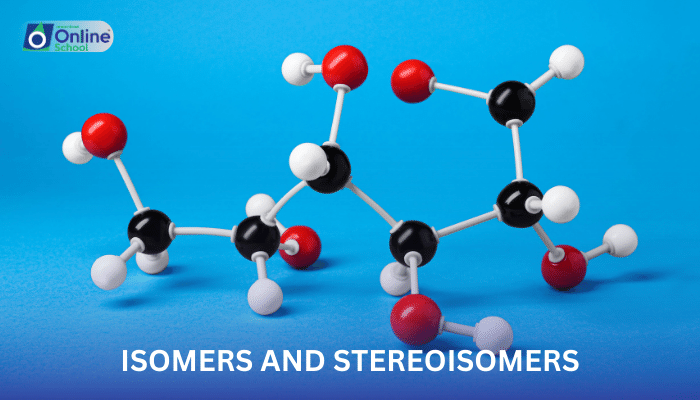
Learning Outcomes
i. Define isomers and stereoisomers.
ii. Describe the two stereoisomers of glucose: D-glucose and L-glucose.
iii. Explain why only D-glucose is found in living organisms.
i. Isomers: Isomers are molecules that have the same molecular formula but different structural formulas. This means that isomers have the same atoms in the same proportions, but the atoms are arranged differently in the molecule.
For example, the following two molecules are isomers:
CH3CH2OH
CH3OCH3
These two molecules have the same molecular formula, but the atoms are arranged differently. The first molecule is ethanol, and the second molecule is dimethyl ether.
ii. Stereoisomers
Stereoisomers are molecules that have the same molecular formula and structural formula but differ in the spatial arrangement of their atoms. This means that stereoisomers have the same atoms in the same proportions and arranged in the same order, but the atoms are oriented differently in space.
For example, the following two molecules are stereoisomers:
H-CH3-CH2-OH
HO-CH2-CH3-H
These two molecules have the same molecular formula and structural formula, but the atoms are oriented differently in space. The first molecule is D-glucose, and the second molecule is L-glucose.
iii. Stereoisomers of glucose
Glucose has two stereoisomers: D-glucose and L-glucose. D-glucose is the form of glucose that is found in living organisms. L-glucose is not found in living organisms.
D-glucose and L-glucose are enantiomers. Enantiomers are stereoisomers that are mirror images of each other. This means that if you could superimpose one enantiomer on top of the other, they would not perfectly match up.
The following diagram shows the two stereoisomers of glucose:
D-glucose and L-glucose
Why only D-glucose is found in living organisms
Only D-glucose is found in living organisms because enzymes in living organisms are specific for D-glucose. Enzymes are proteins that catalyze chemical reactions. Catalysts are substances that speed up chemical reactions without being consumed in the reaction.
Enzymes work by binding to their substrates and then catalyzing the reaction. Substrates are the molecules that are involved in the chemical reaction. Enzymes are specific for their substrates, which means that they only bind to and catalyze the reaction of their specific substrates.
The enzymes in living organisms are specific for D-glucose because they have evolved to recognize and bind to the D-glucose enantiomer. L-glucose is not recognized or bound by the enzymes in living organisms, so it cannot be used for energy or to synthesize other molecules.
Real-world applications of isomers and stereoisomers
Isomers and stereoisomers are used in a variety of products and industries. For example, isomers of glucose are used in food products, such as corn syrup and high-fructose corn syrup. Stereoisomers of glucose are used in the production of certain pharmaceuticals and in research to study the function of enzymes.
Isomers are molecules that have the same molecular formula but different structural formulas. Stereoisomers are molecules that have the same molecular formula and structural formula but differ in the spatial arrangement of their atoms. Glucose has two stereoisomers: D-glucose and L-glucose. Only D-glucose is found in living organisms because enzymes in living organisms are specific for D-glucose.